Reasonable Suspicion Testing
Reasonable suspicion drug and/or alcohol testing is a tool found  in many drug policies that is employed by companies looking to establish a safe, secure and healthy environment for their employees, colleagues, customers and community. Reasonable suspicion simply means that there is reason to believe the employee is under the influence of drugs or alcohol while on the job. This belief or suspicion must be based on objective factors, such as the direct observation of an employee’s appearance, speech, behavior, odor or other conduct. Reasonable suspicion should not be based on hearsay or rumors and should not include behavior or conduct that is simply attributable to some type of common error. For example, dropping something on the floor, being late to work or being in a bad mood could have many explanations. While these actions may cause a good supervisor to pay closer attention to this particular employee, they do not rise to level of reasonable suspicion of drug or alcohol use. Closer observation may lead to other observations such as slurred speech, unsteady balance, dilated pupils, excessive perspiration, etc – all of which could lead to reasonable suspicion testing.
in many drug policies that is employed by companies looking to establish a safe, secure and healthy environment for their employees, colleagues, customers and community. Reasonable suspicion simply means that there is reason to believe the employee is under the influence of drugs or alcohol while on the job. This belief or suspicion must be based on objective factors, such as the direct observation of an employee’s appearance, speech, behavior, odor or other conduct. Reasonable suspicion should not be based on hearsay or rumors and should not include behavior or conduct that is simply attributable to some type of common error. For example, dropping something on the floor, being late to work or being in a bad mood could have many explanations. While these actions may cause a good supervisor to pay closer attention to this particular employee, they do not rise to level of reasonable suspicion of drug or alcohol use. Closer observation may lead to other observations such as slurred speech, unsteady balance, dilated pupils, excessive perspiration, etc – all of which could lead to reasonable suspicion testing.
Supervisor Training
 Professional training of supervisory staff is the best way to learn about reasonable suspicion testing. In some industries, such as DOT regulated companies, supervisor training is required. Training should teach supervisors about the types of drugs that are tested for as well as the signs and symptoms indicating possible use of these substances. For instance, cocaine is a stimulant and makes everything in the body speed up. Those under the influence of cocaine may be hyper, have rapid movements, be talkative and have dilated or enlarged pupils. These are the types of signs a supervisor should be trained to look for as reasonable suspicion of the use of cocaine, or any other stimulant like meth or crack. In addition to learning more about the drugs and what to look for in the use of such drugs, supervisors should also be trained in what constitutes reasonable suspicion and how to properly identify and document direct observations. Supervisors who are not trained to identify and observe the signs of use associated with drug and alcohol may expose the company up to significant liability, discrimination claims and other legal issues.
Professional training of supervisory staff is the best way to learn about reasonable suspicion testing. In some industries, such as DOT regulated companies, supervisor training is required. Training should teach supervisors about the types of drugs that are tested for as well as the signs and symptoms indicating possible use of these substances. For instance, cocaine is a stimulant and makes everything in the body speed up. Those under the influence of cocaine may be hyper, have rapid movements, be talkative and have dilated or enlarged pupils. These are the types of signs a supervisor should be trained to look for as reasonable suspicion of the use of cocaine, or any other stimulant like meth or crack. In addition to learning more about the drugs and what to look for in the use of such drugs, supervisors should also be trained in what constitutes reasonable suspicion and how to properly identify and document direct observations. Supervisors who are not trained to identify and observe the signs of use associated with drug and alcohol may expose the company up to significant liability, discrimination claims and other legal issues.
Addressing a Situation
A good supervisor training program will also provide instruction on the best ways to approach an employee in a reasonable suspicion situation. Maintaining privacy and properly documenting the incident are critical to handling a reasonable suspicion incident. Once a supervisor has determined reasonable suspicion exists through their direct observation, they should follow the steps outlined by the company. Getting a second supervisor to observe the employee in question and completing an incident report or other paperwork documenting the observations are good ways of preparing to address the employee and the situation. The employee should be escorted to an area where personnel matters can be discussed privately. The employee should be advised of the supervisor’s observations and that they are being referred for reasonable suspicion testing. The employee should then be escorted to the collection site for the drug and/or alcohol testing to be completed and arrangements should be made for the employee to get home safely. At no time should an employee suspected of being under the influence of drugs or alcohol be allowed to operate a motor vehicle. If you are sending them for reasonable suspicion testing, by default, you are suspecting that they are currently under the influence.
Testing & Results
Testing is recommended to be done by a trained and certified collector – preferably by a third party lab or clinic
 – either at the clinic location or having the collector come to the company site. In the case of drug tests, laboratory confirmation and medical review of the test results should be an absolute requirement to avoid any mistakes or erroneous results. For alcohol tests, a confirmation test of alcohol levels should be conducted by a certified Breath Alcohol Technician for complete and accurate results. All positive results should be submitted to the employee in writing within 24 hours of receiving the results. A reasonable suspicion situation requires careful handling of documentation, personnel records and potentially sensitive test results. All employees having access to this information have a legal responsibility to maintain the strictest and highest standards of confidentiality throughout the entire process.
– either at the clinic location or having the collector come to the company site. In the case of drug tests, laboratory confirmation and medical review of the test results should be an absolute requirement to avoid any mistakes or erroneous results. For alcohol tests, a confirmation test of alcohol levels should be conducted by a certified Breath Alcohol Technician for complete and accurate results. All positive results should be submitted to the employee in writing within 24 hours of receiving the results. A reasonable suspicion situation requires careful handling of documentation, personnel records and potentially sensitive test results. All employees having access to this information have a legal responsibility to maintain the strictest and highest standards of confidentiality throughout the entire process.

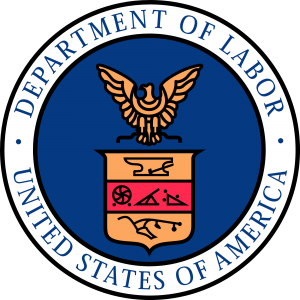
 program and selection process is a great option for companies. It protects the company from any claims of impropriety, discrimination or targeting by a disgruntled employee in that the company has absolutely no control over the process or actual selections. Companies like
program and selection process is a great option for companies. It protects the company from any claims of impropriety, discrimination or targeting by a disgruntled employee in that the company has absolutely no control over the process or actual selections. Companies like  Employees may be asked to report to a drug and alcohol testing clinic or there may be a collector that comes to the company to perform the collection on site.
Employees may be asked to report to a drug and alcohol testing clinic or there may be a collector that comes to the company to perform the collection on site.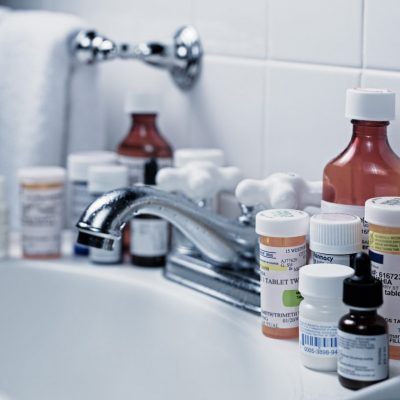
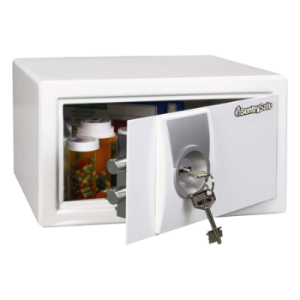
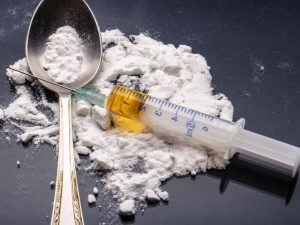 Youth overdose deaths during the same have quadrupled in Kansas, Montana, Ohio, Wisconsin and Wyoming. West Virginia has the highest drug overdose death rate in America today with over 12 overdose deaths per 100,000 youths.
Youth overdose deaths during the same have quadrupled in Kansas, Montana, Ohio, Wisconsin and Wyoming. West Virginia has the highest drug overdose death rate in America today with over 12 overdose deaths per 100,000 youths.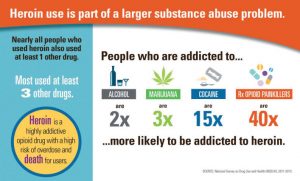

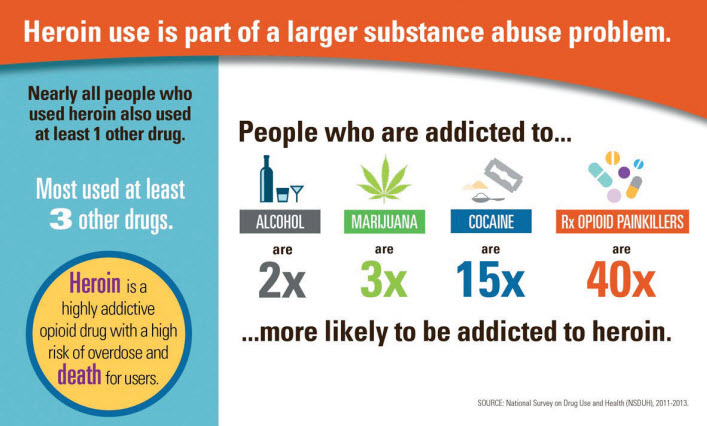
 How can the remaining 80 percent of employers get informed and gain confidence when facing this challenge? Experts suggest that companies add specialized workplace training for supervisors, implement drug testing programs, and strengthen their policies with more precise language about drug use without a prescription, employee impairment, and return-to-work protocols.
How can the remaining 80 percent of employers get informed and gain confidence when facing this challenge? Experts suggest that companies add specialized workplace training for supervisors, implement drug testing programs, and strengthen their policies with more precise language about drug use without a prescription, employee impairment, and return-to-work protocols. Now what? I sit here staring at the plus sign on the at-home pregnancy test. It’s the same result I got with the three other tests I did (just in case). A range of emotions are flooding my mind as I wrap my head around the reality that there is a baby growing inside me. I haven’t felt quite right for the past few weeks and this explains a whole lot. The father! I need to tell him about this too. When this sinks into my consciousness I feel what could possibly be my first wave of morning sickness rising to greet me. It’s not morning sickness though. It is pure emotional fear and confusion. There is a very real possibility the father could be one of two different men.
Now what? I sit here staring at the plus sign on the at-home pregnancy test. It’s the same result I got with the three other tests I did (just in case). A range of emotions are flooding my mind as I wrap my head around the reality that there is a baby growing inside me. I haven’t felt quite right for the past few weeks and this explains a whole lot. The father! I need to tell him about this too. When this sinks into my consciousness I feel what could possibly be my first wave of morning sickness rising to greet me. It’s not morning sickness though. It is pure emotional fear and confusion. There is a very real possibility the father could be one of two different men.
 Most employers screen new applicants with background checks and drug screens. After all, this is a necessity in the modern workplace to enforce high workplace standards. But if employers knew that there was another way to ensure cost savings and quality employees, wouldn’t they do it? In short: further employee screening does exist in the form of pre-employment physicals. Employers who choose to conduct these physical examinations save time, money, and frustration while making the workplace a safer, more productive environment for everyone.
Most employers screen new applicants with background checks and drug screens. After all, this is a necessity in the modern workplace to enforce high workplace standards. But if employers knew that there was another way to ensure cost savings and quality employees, wouldn’t they do it? In short: further employee screening does exist in the form of pre-employment physicals. Employers who choose to conduct these physical examinations save time, money, and frustration while making the workplace a safer, more productive environment for everyone. health can be a big burden for employers in terms of lost productivity due to last minute call outs or sick days. Alternately, it could be a motivator for an employee to make health and lifestyle changes in their personal life. This would ultimately make them a more efficient employee and save employers from overused sick days and insurance claims.
health can be a big burden for employers in terms of lost productivity due to last minute call outs or sick days. Alternately, it could be a motivator for an employee to make health and lifestyle changes in their personal life. This would ultimately make them a more efficient employee and save employers from overused sick days and insurance claims. Recent studies show that 57 percent of fatal car crashes involve a driver who tests positive for alcohol or drugs. We all know that driving a car under the influence puts the driver and others around them at higher risk for accidents and injury. The same holds true when it comes to accidents in the workplace. On the road, in the office or on the job site – workplace accidents resulting in property damage or personal injury lead to added expense and liability exposure for the employer. Post accident testing, sometimes referred to as “post-incident” testing, can help determine if drugs or alcohol may have been a contributing factor leading to the incident.
Recent studies show that 57 percent of fatal car crashes involve a driver who tests positive for alcohol or drugs. We all know that driving a car under the influence puts the driver and others around them at higher risk for accidents and injury. The same holds true when it comes to accidents in the workplace. On the road, in the office or on the job site – workplace accidents resulting in property damage or personal injury lead to added expense and liability exposure for the employer. Post accident testing, sometimes referred to as “post-incident” testing, can help determine if drugs or alcohol may have been a contributing factor leading to the incident.
 The Testing
The Testing certified Breath Alcohol Technician (BAT) before final alcohol test results are recorded and delivered to the employer.
certified Breath Alcohol Technician (BAT) before final alcohol test results are recorded and delivered to the employer. Scientific experts at Quest Diagnostics have analyzed and published annual workplace drug testing data and insights since 1988 in the
Scientific experts at Quest Diagnostics have analyzed and published annual workplace drug testing data and insights since 1988 in the  Till The Cows Come Home…This Ain’t Your Momma’s Farm Party
Till The Cows Come Home…This Ain’t Your Momma’s Farm Party Lethal Trail Mix
Lethal Trail Mix
 Parental vigilance has never been more important. Parents should secure any and all prescriptions and over the counter medications that must be kept in the home. This includes their child’s ADHD medications which is widely sought after on the streets, in schools and at parties. Parents should periodically purge their medicine cabinet of unused prescription drugs. Contact your local pharmacy or law enforcement office to find out how to best dispose of unwanted medications. Keeping track of all medications including over-the-counter drugs that are being taken and/or stored in the home can help quickly identify problems.
Parental vigilance has never been more important. Parents should secure any and all prescriptions and over the counter medications that must be kept in the home. This includes their child’s ADHD medications which is widely sought after on the streets, in schools and at parties. Parents should periodically purge their medicine cabinet of unused prescription drugs. Contact your local pharmacy or law enforcement office to find out how to best dispose of unwanted medications. Keeping track of all medications including over-the-counter drugs that are being taken and/or stored in the home can help quickly identify problems.